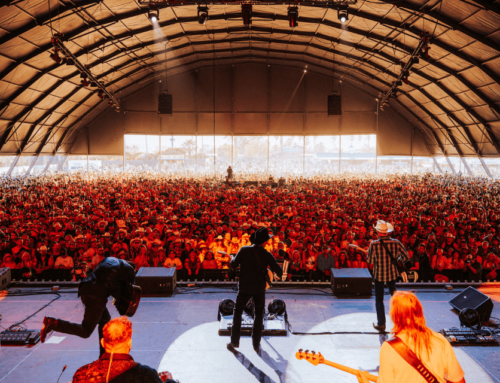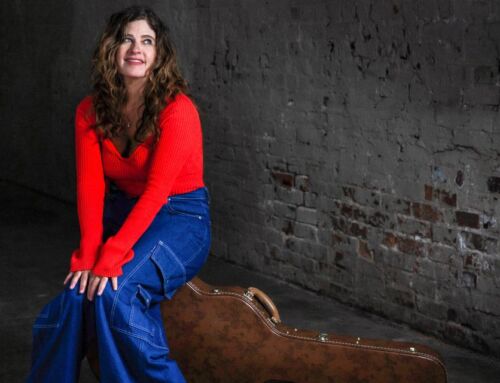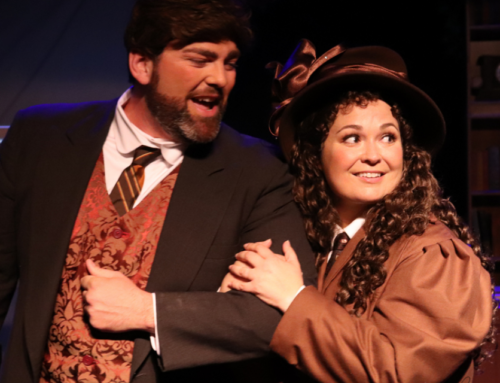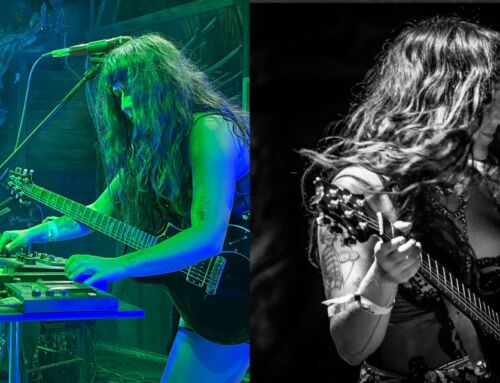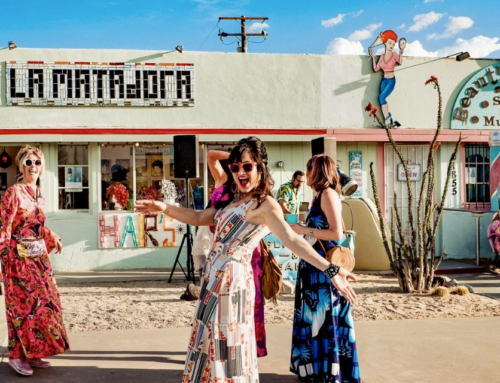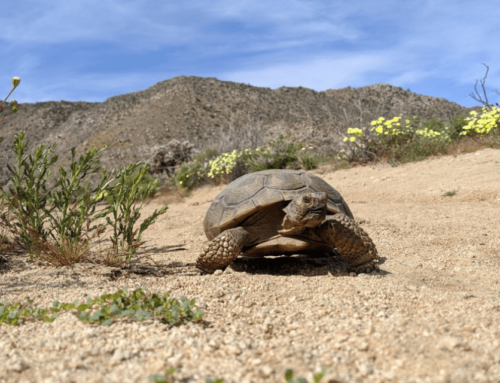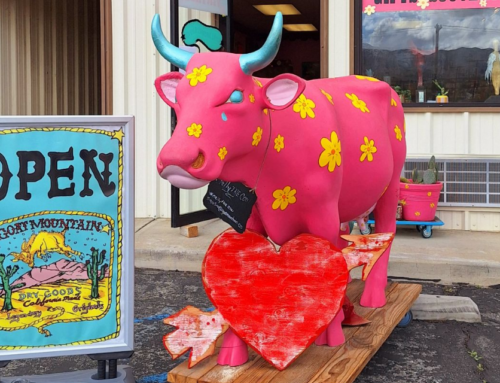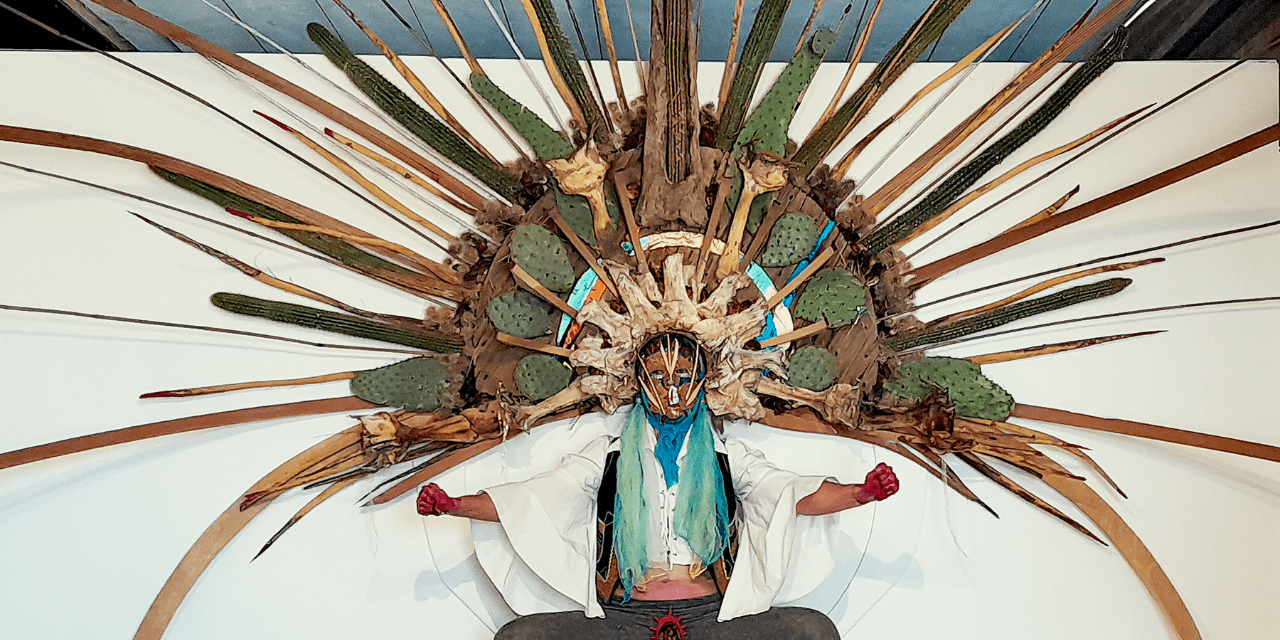
CLAUDIA BUCHER: SOOTHSAYER
By Katie Nartonis
“I had an eclectic and culturally rich childhood growing up surrounded by all sorts of creative types: artists, writers, filmmakers, etc. and had exposure to European cultures through both my father and stepfather.” – Claudia Bucher
Art history of the 20th Century includes, for the first time, the act of artists stepping physically into their own narrative. Performance artists use their corporeal body as a tool to advance and deepen the visceral impact of their artworks.
Now famous early performance artworks include Joseph Beuys’ seminal work, “I Like America and America Likes Me” (1974), where the famed German artist interacted for three days in an empty SOHO gallery space with a pile of straw, a shepherd’s staff, a felt blanket and a wild coyote. On the West Coast, during that same year, Chris Burden conceived and created, “Trans-Fix.” In this work, Burden was ‘crucified’ – as he lay prone, his hands attached with nails to the top of a Volkswagen Beetle. The photos that survive of these two art actions are some of the most powerful art images from their time.
Female artists were key to the early development of performance art. Art Historian, Dr. Wendy Slatkin, Ph.D., notes in Women Artists in History that “during the 1970s, women artists interested in both exploring their gender-defined identities and in society’s changing attitudes and behavior toward
women turned to a totally new art form known as “performance art.” (1) Carolee Schneemann, Hannah Wilke, Ana Mendieta, and Suzanne Lacy are all noted as early performance artists. All have important monographs published on their work.
Claudia Bucher is a multimedia conceptual artist based here in the Hi-Desert who is a part of this rich tradition. Her work puts an emphasis on installation art and durational performance. The artist works in a range of media depending on the project at hand. Bucher shared in an interview with the Joshua Tree Voice that “I tend to work as a project-based artist rather than someone who tinkers daily in the studio. “I like to experiment with synthesizing seemingly unrelated concepts, topics, areas of study, into a hybridized whole,” she shared.
Bucher’s performance piece from 1989, titled “Coleoptera-Cyborg” conjured a mate-seeking beetle cyborg as its focus. Her performance piece, “Lichen Femosa” (2017), suggests the presence of an outer space which is “daydreaming migratory signals” (2). Bucher’s work pre-supposes a future/present world in which she plays a featured oracle, one who sees the future and comments on it, warning mankind of our future selves. Bucher participated in last month’s RUSTFEST at the Simi Dabah Foundation with a striking performative piece.
Her powerful piece F.L.U. Season (F.L.U. standing for Fight Like Ukrainians) is not about Ukrainian women per se. Bucher described the piece in our interview, “It’s expressing generalized female rage through the stylized constraints of a kind of warrior dance.” At the start of the war in Ukraine, the artist revisited the subject of her unknown Ukrainian father. Bucher has confirmed through 3 genetic testing sites that she is half Ukrainian but has not been linked with any close enough relatives to help with identifying who he might be. She notes, “It became very frustrating at the start of the war to not know if I might have relatives who were being impacted.”
“For whatever reason, I had an image come to mind to make a warrior woman headdress. I researched the Ukrainian folk tradition of floral headdresses and I looked at the Swiss folk festival of Silvesterklaus. I wanted to create a mash-up of the Ukrainian tradition that is linked to my unknown father and the Swiss tradition linked to the adoptive father I grew up with, and the natural environment that I currently inhabit. The warrior woman headdress was made with live cactus and other organic matter from the property I live on. I wanted to appear as a kind of floating deity figure, so I crafted a way to be seated off the ground against the wall. The performance aspect was made up of my own organic stylized expressions, gestures, and vocalizations. I performed for four and a half hours.”

F.L.U. Season: Warrior Woman Headdress, 2022, Mojavetia, Yucca Valley, CA FLU photos by Jacobine Van Der Meer
Claudia was born in Trenton, New Jersey, and her biological mother was a student at Douglas College at Rutgers. She was placed for adoption and was adopted at 6 weeks by a couple in their 30s. Her adoptive father was a Swiss art and architectural historian, and her adoptive mother was a nurse who grew up in Minnesota.
Bucher recalls, “We lived outside of Princeton, NJ in an old colonial house, in a town called Millstone, until I was 5. My father took a job at the State University of New York (SUNY) Binghampton in upstate New York in 1970, and we lived there on an old farm for 5 years. My adoptive parents divorced when I was 10. My two younger brothers and I moved with our mother to Stony Brook, New York on Long Island where our stepfather, a physicist, had a job at SUNY Stony Brook. I spent 6th, 7th and 9th grade on Long Island.” 8th grade was spent in Denmark, just outside of Copenhagen where Bucher’s stepfather had a gig at NORDITA (Nordic Institute for Theoretical Physics).
Bucher relates, “I’ve always been plagued by a nature versus nurture conflict when trying to assess my identity as an artist. My biological mother was interested in art in college, but she ended up getting a degree in science (later she earned a master’s in computer science). I grew up in a world of art with art pushed on me at every turn. I was kind of primed to pursue it. What I knew is that I liked to make things, and I liked playing. Adults who were artists seemed to still be playing like kids, so that looked good to me. Later my interests broadened, and I had doubts. I liked building things and thought I should study civil engineering and become an architect. I was also interested in experimental theater and performance art. I tried to find a way to synthesize all my interests and that became my art.”
Bucher started taking college level art classes at Florida State University in what would have been her senior year of high school. She took the G.E.D. after 11th grade, and she officially started college the next year at the Rhode Island School of Design (RISD). She went through the Freshman Foundation program and started the second year as an architecture major, but later decided that she didn’t want to continue at an art school and wanted a broader university education.

To the Air Born? 2019, Buckwheat Space, Morongo Valley, CA BucherAir1: Evi Klett

RustWalker, 2024, RustFest at the Simi Dabah Foundation, Joshua Tree, CA BucherRust: Bonnie Hawthorne
“I took a gap year and went on a six month round the world backpacking trip. I then returned to Tallahassee, Florida and enrolled at Florida State University where I briefly thought I might pursue engineering.” She spent one year in the architecture program at Florida A&M University, but eventually got her bachelor’s in art from FSU. She then went on to graduate school at the Center for Advanced Visual Studies at MIT but dropped out after less than a year due to financial hardship. “I finally got an MFA degree over a decade later from Art Center College of Design in Pasadena.”
In 1985 Bucher co-founded a non-profit art group and art space called Ca Laboratories International. The nonprofit later became known as Ca Chapel when they moved into an old church building. “We functioned a bit like Joshua Tree’s Beatnik lounge but with a lot more punk rock and a younger demographic,” Bucher reminisced. Her first visit to Joshua Tree National Monument happened when she moved to Los Angeles from the East Coast in 1991. During the first decade in LA, she made many trips to the desert and did some impromptu art projects here and there.
She recalls that, “While I was in grad school at Art Center (2001-2003), one of our adjunct professors lived in Pioneertown and a fellow student was commuting in from Landers. The person I was dating at the time, a fellow MFA student, did a project at the Joshua Tree dry lakebed for his thesis project. It was around that time that I became aware of artists moving to the area.”
It wasn’t until 2012 that Bucher had the opportunity to spend more time in the area and start getting to know people. She relates, “It was an acquaintance from Tallahassee days who had moved to LA much later than I had who initiated the process. He had bought a house in Flamingo Heights and asked me to help him with some projects. Between 2012-2016, I came out to the desert as much as I could and got more and more connected to the community and participated in some art shows. At one point, I was able to do a residency connected to the park.”
Bucher’s story of transitioning to the desert is one of the slow gradual ones. “I have always been inspired by the natural world. Even though I lived in the heart of East Hollywood for thirty years, I was still able to spend a lot of time in the natural world through hiking and biking in the wilds around LA. In Los Angeles, it is harder to find opportunities to do outdoor work. Most work is created for interior spaces. However, I was able to produce a few pieces here and there for outdoor installation events during my years in LA. Now that I live in the desert full time, there is more space and freedom to do outdoor pieces, to interact more directly with the natural world, and to utilize organic materials in the work. I look forward to doing more environmental work.”
1: Women Artists in History (5th edition, Cognella) by Wendy Slatkin, PhD. Page 246
2: Claudia Bucher in Five Movements: Extended Sentience (Cambridge University Press, September 1, 2023) By Meiling Cheng. Page 3

Katie Nartonis is a writer, curator, film maker, and specialist in art and design. Her current exhibition (and documentary film) opened during 2024 Palm Springs Modernism Week: “Jack Rogers Hopkins: California Design Maverick” and is open through September 28th at the historic Sam Maloof Foundation. Look for her upcoming book, “Glimpses of the Joshua Tree Dream.”





